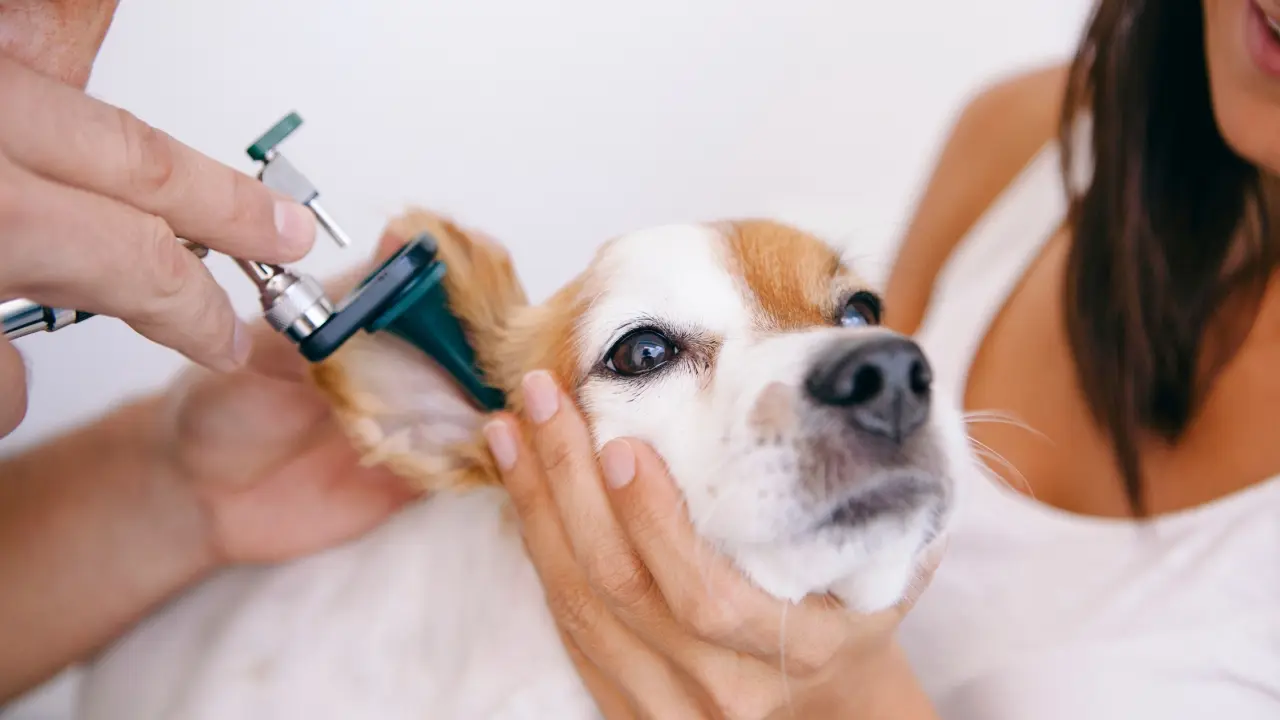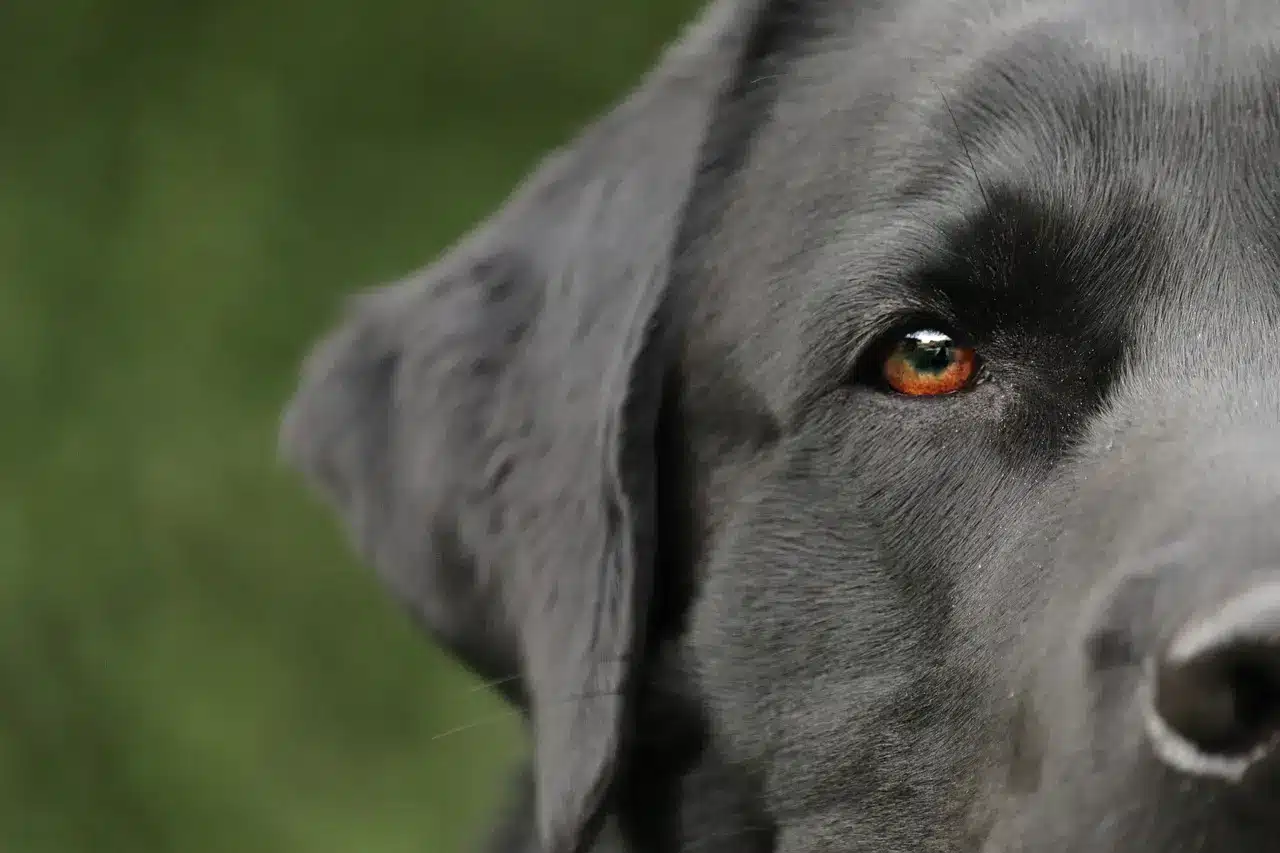Blog 5 Shocking Reasons Your Dog’s Ears Stink
You are not alone if you notice a foul odor coming from your dog’s ears. When your dog’s ears stink, it can indicate a serious health problem that requires immediate attention.
Honey, metal, vinegar, and cheese smells are common odors that indicate issues. This article explains five common reasons for smelly dog ears and provides tips on treating and preventing unpleasant odors.
Key Concepts About Ear Infections
- Unpleasant odors are an indication of potential health issues, such as anal gland problems, ear infections, and dental disease.
- Smells of honey, metal, vinegar, and cheese indicate different concerns.
- Excessive ear wax buildup may disrupt the ear’s ability to self-clean.
- Dietary and environmental allergies may cause ear infections due to yeast and bacteria overgrowth, resulting in a rancid or sweet dog smell that makes the nose wrinkle.
- A common occurrence is grass seeds in the ear, especially in summer.
- The breed and shape of the dog’s ear may predispose them to ear infections due to trapped moisture. Dog breeds with floppy ears are more susceptible.
Causes of Smelly Dog Ears

Smelly ears are usually the result of an inflammation or infection. If any part of the ear canal or ear is inflamed, infected, or affected by underlying diseases or an allergic reaction, it may lead to smelly ears. Infection or inflammation of the external ear canal is called otitis externa. Here are five common causes of otitis externa.
Wax Buildup
Ear wax buildup plays a significant part in a dog’s ear health. It naturally develops to moisturize the skin around the ear canal, preventing irritation and discomfort from dry, itchy ears. The chemical found in ear wax fights off harmful infections and pathogens.
As a protective eardrum shield, wax may become excessive and accumulate in the ear canal if the ability to self-clean is disrupted. Changes in volume and color occur, becoming reddish brown or yellow and oozing out of the ear. If not corrected, the imbalance may predispose the ears to infection and result in a foul odor.
Bacterial or Yeast Infection

Bacterial infections frequently involve more than one kind of bacteria and usually cause a rotten meat or sweet honey smell to emerge from the ear. The infection is typically accompanied by itching, redness, swelling, and sometimes pain and generally needs medical attention with antibiotic ear drops as soon as possible.
The yeast organism Malassezia pachydermatis is usually present in small numbers in the ear canal and on dogs’ skin. When yeast is out of balance due to a faltering immune system caused by illness or stress, there occurs clinical signs of skin disease that include:
- Discomfort
- Dry skin
- Itchiness
- Redness
- Swelling
A yeast infection is not deadly but may lead to other health complications and ear problems that require immediate attention and appropriate treatment. Symptoms include:
- Blood
- Brown/Yellow discharge
- Foul odor
- Head shaking
- Hearing loss
- Loss of balance or walking in circles
- Rubbing and scratching the ears
If your pooch has a yeast infection, visit your vet as soon as possible to diagnose the problem and help your pup regain ear health. Ear mites also cause a foul odor, like yeast or bacterial infection.
Allergies

Dietary or environmental allergies are another common cause of ears that smell bad. Nearly half of dog ear infections are due to an allergic reaction resulting in the overgrowth of yeast or bacteria usually present in the typical ear canal.
An allergic reaction is ideal for providing the environment needed for an overgrowth of these pathogens. When allergens trigger the dog’s immune system, mediators in the body attempt to fight off offending pathogens.
The natural reaction may lead to swelling and excess moisture in the ear canal, where bacteria and yeast thrive. This results in a sweet or musty odor, infection, and colonization. Because the ears are extensions of the dog’s skin, skin allergies and ear infections go hand in hand.
About half of dogs with dermatitis and 80 percent having food sensitivities suffer from recurring ear diseases. Allergies cultivate severe ear infections. The most notable indications that dogs suffer from allergies that may cause further pathology in the ears are:
- Discharge from the ears
- Head rubbing on the affected ear side
- Open sores and scabs around or in the ears
- Scratching ears
- Swollen inner ear canal
- Warm, red skin
If you suspect your puppy suffers from allergies affecting the ears, visit the vet as soon as possible so they can identify and eliminate the offending allergens. They can also administer ear cleaning, ointments, and medications to reduce the swelling and clear the infection in the affected ear canal.
Grass Seeds
Sudden, violent head shaking and a smelly, gunky ear are indications that a dog has grass seeds in its ear canal. Grass seeds are foreign objects that get into areas they should not. They are a common problem, particularly during the summer months.
Common areas include the skin between the toes of a dog’s feet, the eyes, and the ear. Their dart-like, one-directional shape makes them sharp enough to penetrate a crevice or the skin. Grass seeds cannot come out independently; they keep migrating forward, which causes infections, abscesses, and swelling if not removed early.
If your dog circles to one side and scratches its ears, an ear infection caused by grass seed may be the cause. It is essential to go to the vet and have them look in the ear canal to see if pesky grass seed is stuck inside. The vet removes the seed and gives the dog medication to clear the secondary infection and reduce swelling.
Shape of the Ears
A dog’s ear canal has an L-shape. Regardless of the breed, all dog ear canals have this shape. Due to the design, areas deep within the ear canal are ideal for growing bacteria and fungus. Excess water can get trapped in the deep, dark area of the L-shaped canal when a dog swims in the lake or gets sprayed when bathed.
It creates the perfect environment for bacteria colonization and causes an infection that leads to foul, smelly ears and other ear infection symptoms. Dogs with floppy ears, such as Cavalier King George spaniels, English cocker spaniels, Basset hounds, and Beagles, are most susceptible to ear infections. Their ears restrict air flow, and moisture is easily trapped in the canal.
Treatment and Prevention of Smelly Ears

There are many different causes of smelly dog ears. Any smell coming from a dog’s ears, from a sweet to musty smell, is cause for concern. It is essential to seek medical advice to help the dog resolve the issue. A neglected ear infection may lead to hearing loss.
There are things to help a dog’s ear health, but it is recommended that you talk to a veterinarian before putting anything in a dog’s ears. You can ask the staff at Very Important Paws for more tips.
Probiotics
Adding probiotics to the dog’s diet is an excellent way to help fight the cause of the problem. Packed with beneficial bacteria naturally found in the gut and nutrients, probiotics significantly improve overall health and provide natural defense tools to combat infections and keep a healthy bacteria balance.
The body functions better when a dog’s gut works well. Probiotics are an essential and integral supplement to add to a dog’s daily routine.
Contact Very Important Paws today in Palm Beach for all your dog boarding, hotel, daycare, grooming, and training needs.

